Dissections of Squares to Multiple Squares
Steven Dutch, Professor Emeritus, Natural and Applied Sciences, University
of Wisconsin - Green Bay
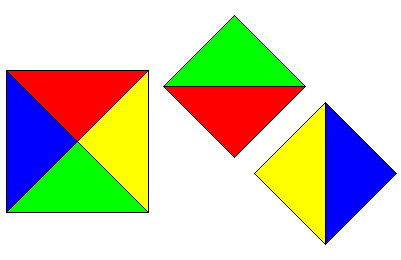 |
One square to two equal squares is trivial: |
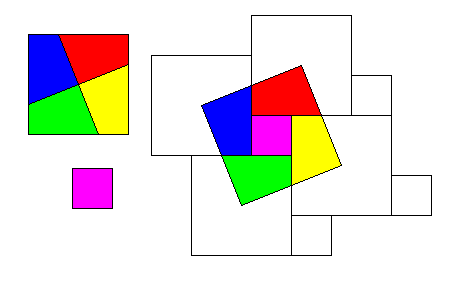 |
It is possible to assemble any two squares into a single square. The method is based on the plane tessellation of two unequal squares. |
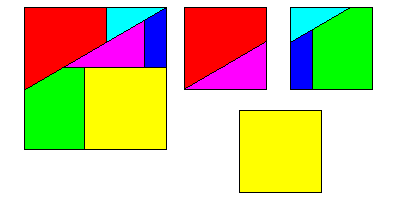 |
To assemble a square into n squares, the basic method is to construct one or more squares of the desired size (edge = square root of n) in the corner of the large square. Let the leftover distance on the common edge be h. On the opposite edge of the large square, mark off distance h from the base and draw a line from that point to the opposite corner. |
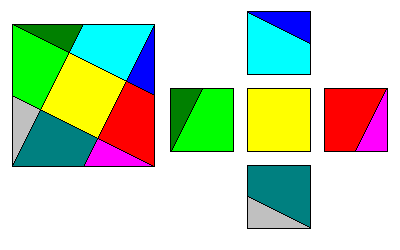 |
Assembling four (or nine, etc.) equal squares into a single square is the ultimate in triviality. Assembling five squares into a single square is simple and again, based on tessellations. |
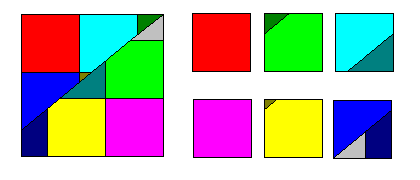 |
Six squares into a single square is based on the method described above for assembling three squares into one |
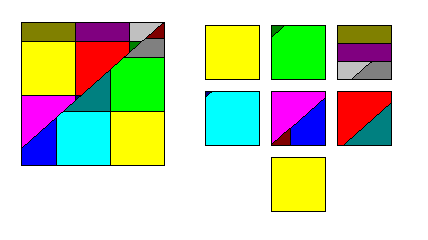 |
Left and below are two assemblies of seven squares into one. |
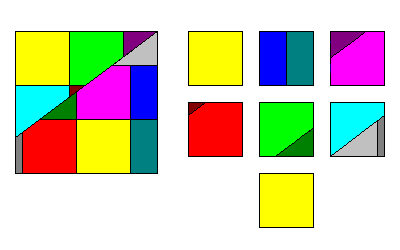 |
|
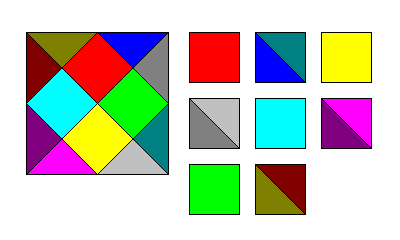 |
Eight squares into one is trivial. |
Return to Recreational Mathematics Topics
Return to Symmetry Index
Return to Professor Dutch's home page
Created 19 August 2003, Last Update 20 January 2020
Not an Official UW-Green Bay Site